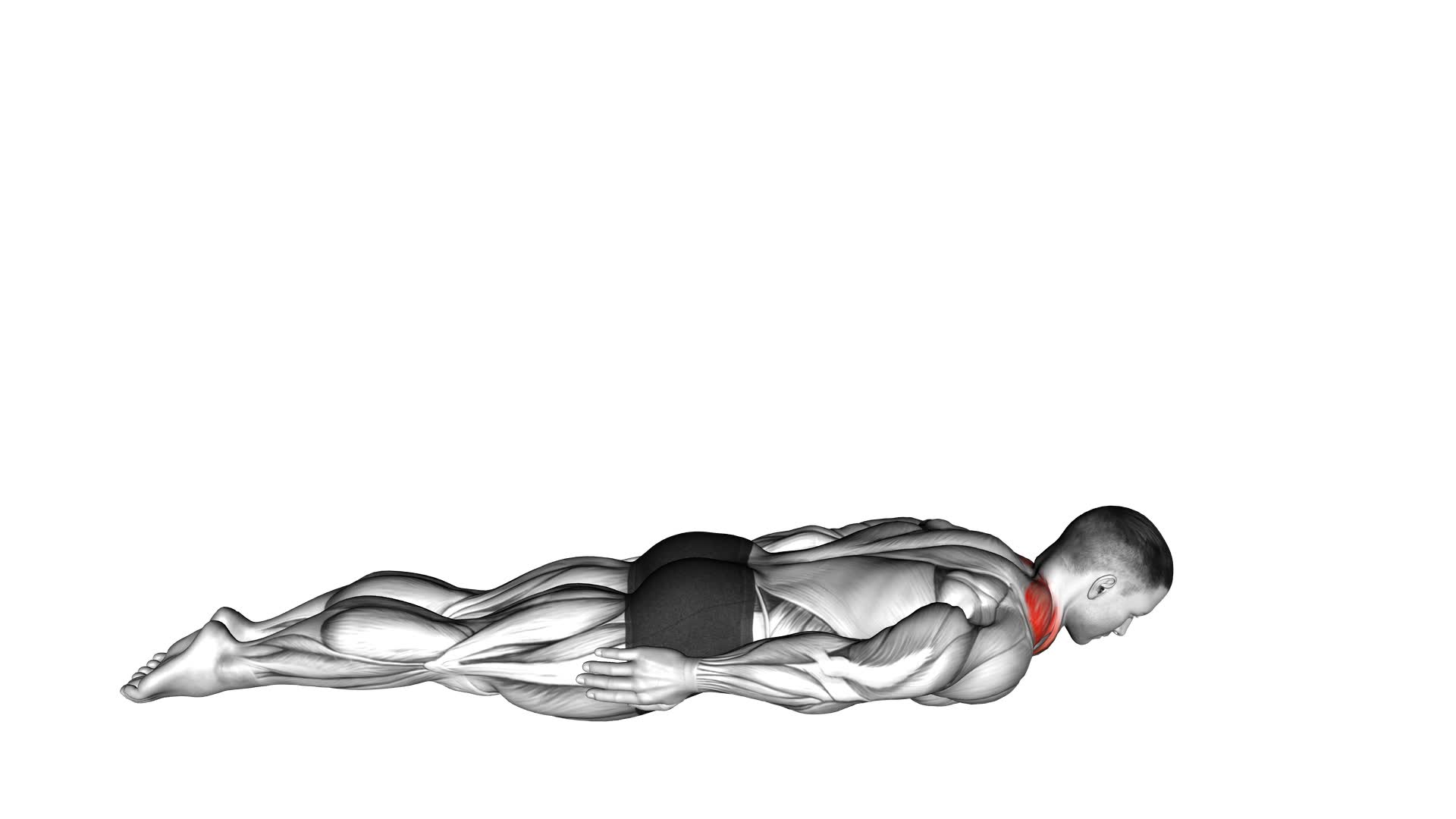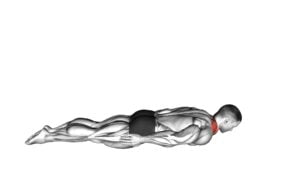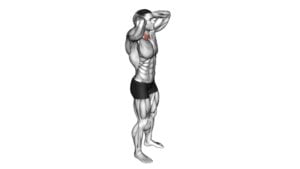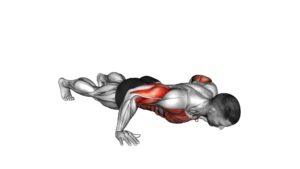Prone Cervical Extension Isometric Hold – Video Exercise Guide & Tips

Are you looking for an effective exercise to strengthen your neck and improve posture? Look no further than the Prone Cervical Extension Isometric Hold!
Watch This Exercise Video
This video exercise guide provides step-by-step instructions and helpful tips to ensure proper form and maximize effectiveness.
Avoid common mistakes and learn how to modify and progress the exercise. Whether you have neck pain or injuries, precautions and considerations are provided to keep you safe.
Get ready to strengthen and stabilize your neck with this informative guide!
Key Takeaways
- Prone Cervical Extension Isometric Hold can alleviate neck pain.
- The exercise targets specific neck muscles and improves stability and support for the neck.
- It contributes to better posture and reduces strain on the neck and back.
- Proper form and technique, including maintaining neck alignment and engaging core muscles, are crucial for the exercise.
Benefits of the Prone Cervical Extension Isometric Hold
The Prone Cervical Extension Isometric Hold offers a range of benefits for strengthening your neck muscles and improving posture. If you're struggling with neck pain or want to strengthen your neck muscles, this exercise is a great option for you.
By engaging in the Prone Cervical Extension Isometric Hold, you can effectively stretch and strengthen the muscles in your neck.
One of the main benefits of this exercise is that it helps to alleviate neck pain. By stretching the neck muscles in a controlled manner, you can relieve tension and tightness that may be causing discomfort. Additionally, the Prone Cervical Extension Isometric Hold targets specific muscles in the neck, helping to strengthen them over time. This can lead to improved stability and support for your neck, reducing the likelihood of future injuries or pain.
Furthermore, this exercise also contributes to better posture. By strengthening the neck muscles, you can improve the alignment of your head and neck, which is vital for proper posture. Good posture not only enhances your physical appearance but also reduces strain on the neck and back, preventing pain and discomfort.
To ensure you get the most out of the Prone Cervical Extension Isometric Hold, it's important to practice proper form and technique.
Proper Form and Technique for the Exercise
To perform the Prone Cervical Extension Isometric Hold with proper form and technique, it's important to focus on maintaining proper neck alignment throughout the exercise.
Keep your neck in a neutral position, avoiding excessive extension or flexion.
This will help prevent strain on the neck muscles and ensure that you reap the maximum benefits from this exercise.
Neck Alignment During Exercise
Maintain proper neck alignment by engaging your core and keeping your gaze straight ahead during the Prone Cervical Extension Isometric Hold exercise. Proper form and technique are crucial for maximizing the benefits of neck exercises and maintaining good posture.
Here are some key tips to ensure correct neck alignment during the exercise:
- Start by lying facedown on a mat or bench with your arms extended overhead.
- Engage your core muscles by drawing your belly button towards your spine.
- Keep your neck in a neutral position by avoiding excessive tilting or rotation.
- Maintain a straight line from your head to your tailbone, avoiding any excessive arching or rounding of your spine.
By following these guidelines, you can protect your neck and spine from unnecessary strain and promote optimal muscle activation.
Now, let's delve into the next section about avoiding excessive neck strain.
Avoiding Excessive Neck Strain
To avoid excessive neck strain during the Prone Cervical Extension Isometric Hold exercise, use proper form and technique. This will help in preventing neck strain and maintaining proper posture throughout the exercise.
Start by lying face down on a mat with your forehead resting on the ground. Place your hands by your sides, palms facing down. Slowly lift your head and chest off the ground, keeping your neck in a neutral position.
Be mindful not to strain your neck by avoiding excessive extension or flexion. Instead, focus on engaging the muscles in your upper back and shoulders to lift your chest.
Hold this position for the recommended duration, usually around 10 to 30 seconds, while maintaining a strong core and relaxed neck muscles.
Benefits of Correct Form
When using proper form and technique, you can experience the benefits of correct form during the Prone Cervical Extension Isometric Hold exercise. By following the correct technique, you can prevent injuries and maximize the effectiveness of the exercise. Here are the key benefits of maintaining proper form:
- Injury Prevention: Proper form ensures that the exercise is performed safely and reduces the risk of straining or injuring your neck muscles.
- Targeted Muscle Engagement: Correct technique allows you to specifically target and engage the muscles in your neck and upper back, maximizing the benefits of the exercise.
- Increased Strength and Stability: Maintaining proper form throughout the exercise helps strengthen the muscles in your neck and upper back, improving stability and overall posture.
- Enhanced Range of Motion: By using the correct technique, you can gradually increase your range of motion, promoting flexibility and reducing stiffness in your neck.
Common Mistakes to Avoid During the Isometric Hold
Avoid using excessive force or straining your neck muscles during the isometric hold. To ensure you get the most out of this exercise and prevent any potential injuries, it's important to be aware of common mistakes and how to avoid them.
One common mistake to avoid is using too much force while performing the isometric hold. Remember, the goal of this exercise is to engage and strengthen your neck muscles, not to strain them. By using excessive force, you may put unnecessary stress on your neck, leading to discomfort or even injury. Instead, focus on maintaining a gentle yet firm contraction of the neck muscles throughout the exercise.
Another mistake to avoid is relying solely on your neck muscles to perform the isometric hold. It's important to engage your core muscles as well to provide support and stability to your neck. By neglecting to activate your core, you may put excessive strain on your neck muscles, leading to fatigue or discomfort. Be sure to engage your abdominal muscles by gently drawing your belly button towards your spine while performing the exercise.
Lastly, avoid holding your breath during the isometric hold. Holding your breath can lead to increased tension in your neck muscles and may hinder proper muscle activation. Instead, focus on maintaining a regular breathing pattern throughout the exercise, inhaling and exhaling slowly and steadily.
Tips to Maximize the Effectiveness of the Exercise
To maximize the effectiveness of the prone cervical extension isometric hold, there are a few key tips to keep in mind.
First, focus on maintaining proper form throughout the exercise, ensuring that your neck and back are aligned and your core is engaged.
Additionally, utilizing proper breathing techniques, such as inhaling deeply and exhaling slowly, can help you relax and enhance the effectiveness of the exercise.
Lastly, consider the duration and frequency of the exercise, starting with shorter holds and gradually increasing both as your strength and endurance improve.
Proper Form Techniques
Maintain proper alignment and engage your core while performing the prone cervical extension isometric hold. This will ensure that you get the most out of this exercise and reduce the risk of injury.
Here are some tips to help you maintain proper form and maximize the effectiveness of the exercise:
- Proper Posture:
- Position yourself face down on a mat or bench with your arms extended overhead.
- Keep your neck in a neutral position, avoiding excessive arching or tucking.
- Muscle Activation:
- Activate the muscles in the back of your neck by gently pressing your forehead into the mat or bench.
- This will help to engage the deep cervical extensor muscles.
- Shoulder Stability:
- Maintain stability in your shoulders by squeezing your shoulder blades together and down.
- This will help to prevent excessive tension in the upper trapezius muscles.
- Breathing:
- Remember to breathe throughout the exercise.
- Inhale deeply and exhale slowly, focusing on relaxing the muscles and releasing any tension.
Breathing Techniques
To maximize the effectiveness of the prone cervical extension isometric hold, focus on your breathing technique. Proper breathing can help you relax and enhance the benefits of this exercise. Incorporating relaxation techniques and mindfulness exercises into your breathing routine can further improve your experience.
As you perform the prone cervical extension isometric hold, take slow, deep breaths in through your nose and exhale through your mouth. Pay attention to your breath, allowing it to flow naturally and smoothly. As you inhale, imagine your breath reaching all the way down to your lower abdomen, filling it with fresh air. As you exhale, visualize any tension or stress leaving your body.
Duration and Frequency
To maximize the effectiveness of the exercise, aim for consistent and regular practice. Here are some tips to help you optimize the duration and frequency of the Prone Cervical Extension Isometric Hold:
- Frequency and intensity: Start with 2-3 sessions per week, allowing at least one day of rest in between. As you progress, you can increase the frequency to 4-5 sessions per week. Focus on maintaining proper form and gradually increase the intensity by holding the position for longer durations.
- Modifications: If you find the exercise too challenging, you can modify it by placing a folded towel under your forehead for support. This will reduce the strain on your neck muscles and allow you to hold the position comfortably.
- Progressions: Once you can hold the position for 30 seconds without any difficulty, you can progress by adding a gentle nodding motion to the exercise. This will further engage the muscles in your neck and help improve their strength and endurance.
Remember to listen to your body and make adjustments accordingly. Consistency and gradual progression are key to achieving the desired results from this exercise.
How to Progress and Modify the Prone Cervical Extension Isometric Hold
To progress and modify the Prone Cervical Extension Isometric Hold, you can incorporate variations and challenges to increase the difficulty level. There are several ways to do this, including progression variations and equipment modifications.
One way to progress the Prone Cervical Extension Isometric Hold is by increasing the duration of the hold. Start with a comfortable hold time, such as 10 seconds, and gradually increase it over time. You can also add repetitions to the exercise, performing multiple holds in a row with short breaks in between.
Another progression variation is to incorporate different arm positions. Instead of placing your hands by your sides, try extending them straight out in front of you or raising them above your head. This will increase the demand on your neck muscles and make the exercise more challenging.
Equipment modifications can also be used to progress the exercise. For example, you can use a resistance band or a stability ball to add resistance or instability to the exercise. This will require your neck muscles to work harder to maintain the correct position.
Remember to listen to your body and only progress the exercise when you feel comfortable and confident. It's important to maintain proper form and avoid any pain or discomfort during the exercise. If you have any concerns or questions, consult with a qualified healthcare professional or a certified fitness trainer.
Precautions and Considerations for Individuals With Neck Pain or Injuries
If you're experiencing neck pain or have a neck injury, it's important to take precautions and consider certain factors before attempting the Prone Cervical Extension Isometric Hold. This exercise can be beneficial for strengthening the muscles in your neck, but it may not be suitable for everyone in these circumstances.
Here are some precautions and considerations to keep in mind:
- Consult with a healthcare professional: Before starting any new exercise program, it's always wise to consult with a healthcare professional, especially if you have neck pain or an injury. They can provide guidance and ensure that the exercise is safe for you.
- Start slowly and listen to your body: If you decide to try the Prone Cervical Extension Isometric Hold, start with a shorter duration and lower intensity. Pay attention to how your neck feels during and after the exercise. If you experience any pain or discomfort, stop immediately and seek advice from a healthcare professional.
- Modify or avoid the exercise if necessary: If the Prone Cervical Extension Isometric Hold causes discomfort or exacerbates your neck pain, it may be necessary to modify the exercise or choose alternative exercises for neck pain relief. Your healthcare professional can provide recommendations tailored to your specific needs.
- Focus on preventing further injury: The goal of any exercise program should be to promote healing and prevent further injury. If you have an existing neck injury, prioritize exercises that are gentle, low-impact, and focus on promoting mobility and stability.
Frequently Asked Questions
How Many Times a Week Should I Perform the Prone Cervical Extension Isometric Hold?
To determine the frequency of performing the prone cervical extension isometric hold, it's important to consider factors like your fitness level and any specific recommendations from a healthcare professional.
Generally, it's advisable to start with 2-3 sessions per week and gradually increase as tolerated. Each session can last around 10-15 seconds initially, gradually building up to 30 seconds or more.
Remember to listen to your body and adjust the frequency and duration accordingly.
Can I Do This Exercise if I Have a History of Neck Surgery?
Yes, you can do this exercise if you have a history of neck surgery. However, it's important to discuss with your doctor or physical therapist beforehand to ensure it's safe for you.
They can assess any potential risks and provide alternative exercises if necessary. It's crucial to prioritize your safety and follow professional guidance to prevent any further injuries or complications.
Is It Normal to Feel a Slight Discomfort During the Exercise?
Feeling a slight discomfort during the exercise is normal. It's important to remember that the prone cervical extension isometric hold can put strain on your neck muscles. However, this discomfort shouldn't be severe or prolonged.
It's actually a sign that your muscles are being challenged and strengthened. The benefits of this exercise include improved neck stability and posture.
Just be sure to listen to your body and stop if the discomfort becomes too intense or painful.
Can I Perform Other Exercises for the Neck in Combination With the Prone Cervical Extension Isometric Hold?
Yes, you can certainly perform other exercises for your neck in combination with the prone cervical extension isometric hold. Adding variations to your neck exercise routine can have several benefits.
It helps to target different muscles and improve overall strength and flexibility in the neck. Additionally, incorporating other exercises can help to prevent muscle imbalances and reduce the risk of injury.
It's important to consult with a professional or trainer to ensure proper form and technique when incorporating different neck exercises.
How Long Should I Hold the Position During Each Repetition of the Exercise?
For optimal results in the prone cervical extension isometric hold, it's important to know the optimal duration of hold. Holding the position for about 10-15 seconds per repetition is recommended. This allows your muscles to engage and strengthen without causing excessive strain.
As you progress, you can increase the duration gradually. Additionally, there are variations and progressions you can incorporate into your routine to challenge yourself further and continue improving your neck strength and stability.
Conclusion
In conclusion, the prone cervical extension isometric hold is a highly beneficial exercise for improving neck strength and stability. By maintaining proper form and avoiding common mistakes, individuals can maximize the effectiveness of this exercise.
Progressions and modifications can be made to challenge oneself further. However, it's important to consider any pre-existing neck pain or injuries and take necessary precautions.
With the right technique and consistency, this exercise can greatly contribute to overall neck health and function.

Author
Years ago, the spark of my life’s passion ignited in my mind the moment I stepped into the local gym for the first time. The inaugural bead of perspiration, the initial endeavor, the very first surge of endorphins, and a sense of pride that washed over me post-workout marked the beginning of my deep-seated interest in strength sports, fitness, and sports nutrition. This very curiosity blossomed rapidly into a profound fascination, propelling me to earn a Master’s degree in Physical Education from the Academy of Physical Education in Krakow, followed by a Sports Manager diploma from the Jagiellonian University. My journey of growth led me to gain more specialized qualifications, such as being a certified personal trainer with a focus on sports dietetics, a lifeguard, and an instructor for wellness and corrective gymnastics. Theoretical knowledge paired seamlessly with practical experience, reinforcing my belief that the transformation of individuals under my guidance was also a reflection of my personal growth. This belief holds true even today. Each day, I strive to push the boundaries and explore new realms. These realms gently elevate me to greater heights. The unique combination of passion for my field and the continuous quest for growth fuels my drive to break new ground.







